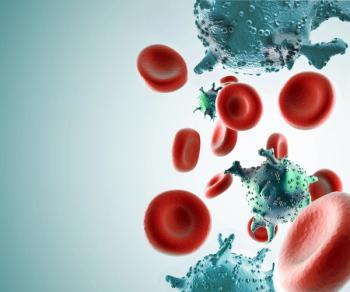
Uterine Cancer Survival Rates Have Improved Despite Higher Mortality Risks
Socioeconomic or racial disparities may contribute to unchanged overall survival among certain patients with metastatic uterine cancer.
Although the mortality risk for metastatic uterine cancer has increased for some populations with metastatic disease, 5-year survival rates have improved in uterine cancer, according to findings from a poster presentation highlighted at the
The proportion of White patients with uterine cancer decreased from 69.1% in 2010 through 2013 to 65.8% in 2014 through 2017 to 61.2% in 2018 through 2021 (P <.001). For Hispanic patients, the rates of those with uterine cancer in each respective period were 12.0%, 13.9%, and 16.2% (P <.001). Additionally, these rates were 9.3%, 10.2%, and 10.9% for Black patients (P <.001).
The incidence of grade 3 disease was 12.7% in 2010 through 2013, 14.4% in 2014 through 2017, and 20.7% in 2018 through 2021 (P <.001). The rates of 5-year survival among patients with metastatic disease were 17.8%, 20.2%, and 25.6% during each respective period (P <.001).
Investigators noted a 36% increase in the risk of mortality among patients who are African American (HR, 1.36; P <.001), a 12% higher risk for patients who are Hispanic (HR, 1.12; P <.001), and 66% increased risk for those with non-endometrioid histology (HR, 1.66; P <.001). Additionally, metastatic disease (HR, 3.94; P <.001) and higher disease grades correlated with worse survival outcomes. Higher income and type of treatment with radiotherapy or surgery correlated with better outcomes.
“Despite a fourfold mortality risk for metastatic uterine cancer, 5-year survival rates have improved. Notably, the introduction and adoption of immunotherapies and in the final time frame analyzed (2018-2021) have contributed to the improved survival outcomes seen in metastatic cases,” lead study author Natalie Moshayedi, from California University of Science and Medicine, wrote with study coauthors.1 “However, socioeconomic, racial, or care volume disparities may contribute to unchanged overall survival, warranting further investigation.”
Investigators assessed trends related to clinical, socioeconomic, and demographic factors impacting uterine cancer survival across the last decade in the US. Based on the recent approvals of tumor-agnostic therapies, authors evaluated how they influenced survival by dividing the study cohort into 3 distinct periods. The study operated on the assumption that earlier periods were marked by exclusive chemotherapy use while later periods involved the use of novel therapies available through clinical trials or FDA approvals.
Study authors collected information from the Surveillance, Epidemiology, and End Results (SEER) database from 2010 to 2021. Specifically, investigators analyzed the periods of 2010 to 2014, 2015 to 2018, and 2018 to 2022. Data assessment involved the use of Chi-square and t-test, Kaplan-Meier, and multivariate Cox proportional hazard models.
The study included a total of 141,364 patients with uterine cancer, who had a median age of 63 years. Additionally, 65.0%, 14.2%, 10.2%, and 9.4% of patients were White, Hispanic, Black, and American Indian or Alaska Native, respectively. Investigators reported that 8.8% of patients presented with metastatic disease.
The most common histology types included endometrioid (70.0%) followed by serous papillary (8.3%), mixed (6.6%), and carcinosarcoma (4.0%). The total incidence of uterine cancer cases saw a 54% increase while patient ages remained constant.
The rates of metastatic disease were 8.1% in 2010 to 2013, 8.4% in 2014 to 2017, and 9.6% in 2018 to 2021 (P <.001). Additionally, the rates of chemotherapy use increased from 23.3% to 25.6% to 26.8% in each respective period; these rates were 24.6%, 25.75%, and 28.3% for the use of radiotherapy or surgery.
Reference
Moshayedi N, Mann-Grewal AA, Adams E, Tran N, Chan JK. Demographic changes impacting survival in uterine cancer from 2010 to 2021. Presented at the 2025 Society of Gynecologic Oncology Annual Meeting on Women’s Cancer (SGO); March 14-17, 2025; Seattle, WA.
Newsletter
Stay up to date on recent advances in the multidisciplinary approach to cancer.

















































































